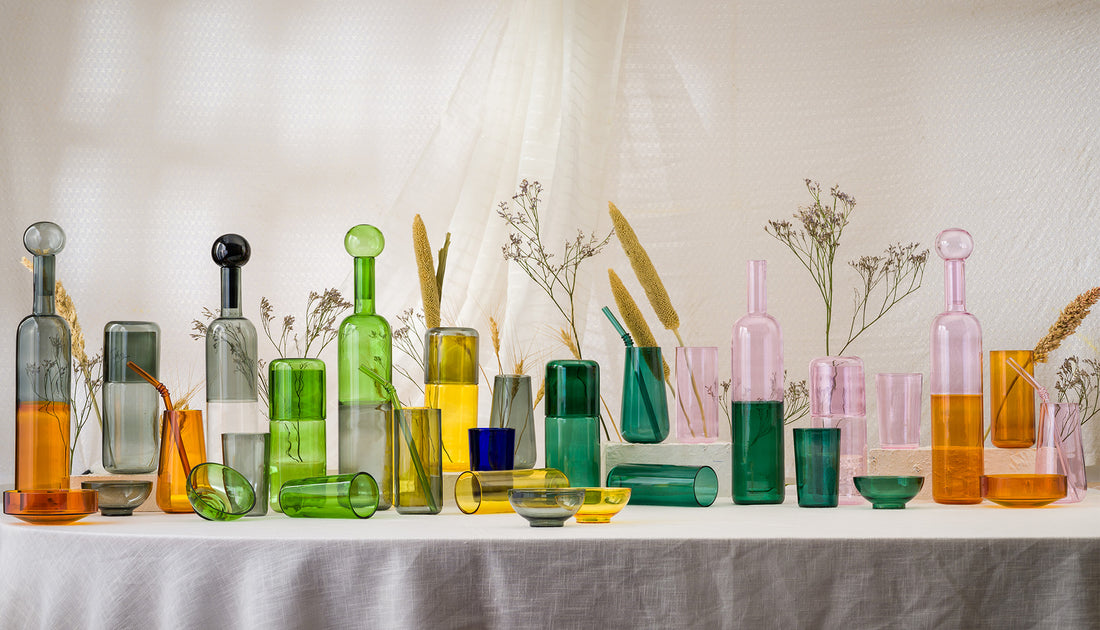Glass is, quite literally, fragile. It shatters at the wrong touch, slices fingers, and disappears into cracks on the floor. Poof! Gone.
And yet - somehow - it’s irresistible. We peer through it. We decorate with it. We worship in its glow. We shatter it, and still we return to it, again and again, as if trying to glimpse something sacred through the splinters.
This attraction is not just aesthetic - it’s primal. It’s the thrill of something that almost wasn't.
Glass is born of sand and fire, chaos controlled, held just long enough to cool. And the fact that it can vanish in an instant only makes it more precious.
Leaving the glass cleaning half done, I sat down to write an article. Because I must not let my stream of consciousness go to waste. I must pen down why do we love- and by we, I mean the world- through ages.
The Crown Jewels of Glass
Let’s start with La Sainte-Chapelle in Paris. Completed in 1248, its walls are barely even walls—just lace-thin structures between towering stained glass windows that flood the chapel in kaleidoscopic light. These windows are ancient graphic novels: panels filled with biblical tales in ruby, sapphire, and gold. It's fragile as a house of cards, yet has stood for centuries like a monument to what humans can do when they decide to make something just beautiful enough to be worth the risk.
Then there’s Dale Chihuly, the modern master of blown glass, whose work explodes in riotous curls and colors. His sculptures don’t just exist; they erupt - dripping from ceilings, blooming in gardens, suspended over canals.
Chihuly once said, “Glass has the ability, more than any other material, to bring joy and a certain happiness to people.” He’s right. There’s something euphoric in watching light dance across his work, like you’ve caught a piece of magic mid-flicker.
Glass as Power, Status, and Revolution
In Venice, the island of Murano became synonymous with glass so exquisite it was once worth more than gold. The Republic of Venice guarded its secrets jealously - glassmakers were forbidden to leave the city, under threat of assassination. Their creations - mirrors so smooth they sparked envy across Europe - were reserved for the elite. To own fine glass was to wield power. Even Louis XIV's Hall of Mirrors at Versailles was as much a political statement as it was decorative: a glittering display of domination over nature, industry, and light.
Centuries later, glass came to symbolize the fragility and force of protest. Think of Kristallnacht, the “Night of Broken Glass,” when Jewish homes, shops, and synagogues across Nazi Germany were destroyed.
The shattered storefronts weren’t just broken property; they were a warning, a terrible foreshadowing. Glass here marked a historical fracture - how quickly beauty and civilization can be destroyed.
But glass doesn’t stay broken. Windows are replaced. Chandeliers are re-hung. People rebuild.
We’re Still Making Glass Sacred
Today, glass is everywhere, and still we treat it like treasure. The iPhone in your hand? That’s Gorilla Glass. Skyscrapers reach into the clouds with shimmering facades. Scientists are crafting glass capable of storing the entire internet in a single disc. And in art, people are still melting, blowing, etching, and layering glass into miracles.
Why? Maybe it’s because glass - transparent, sharp, luminous - is a little like life. It’s dangerous, gorgeous, and gone too fast. Maybe we’re drawn to it because, like us, it’s just trying to hold itself together.
So yes, glass breaks. But we don’t stop making it. We never will. And neither will we stop loving it.
So next time you think, why invest in glass, think about this piece
.

